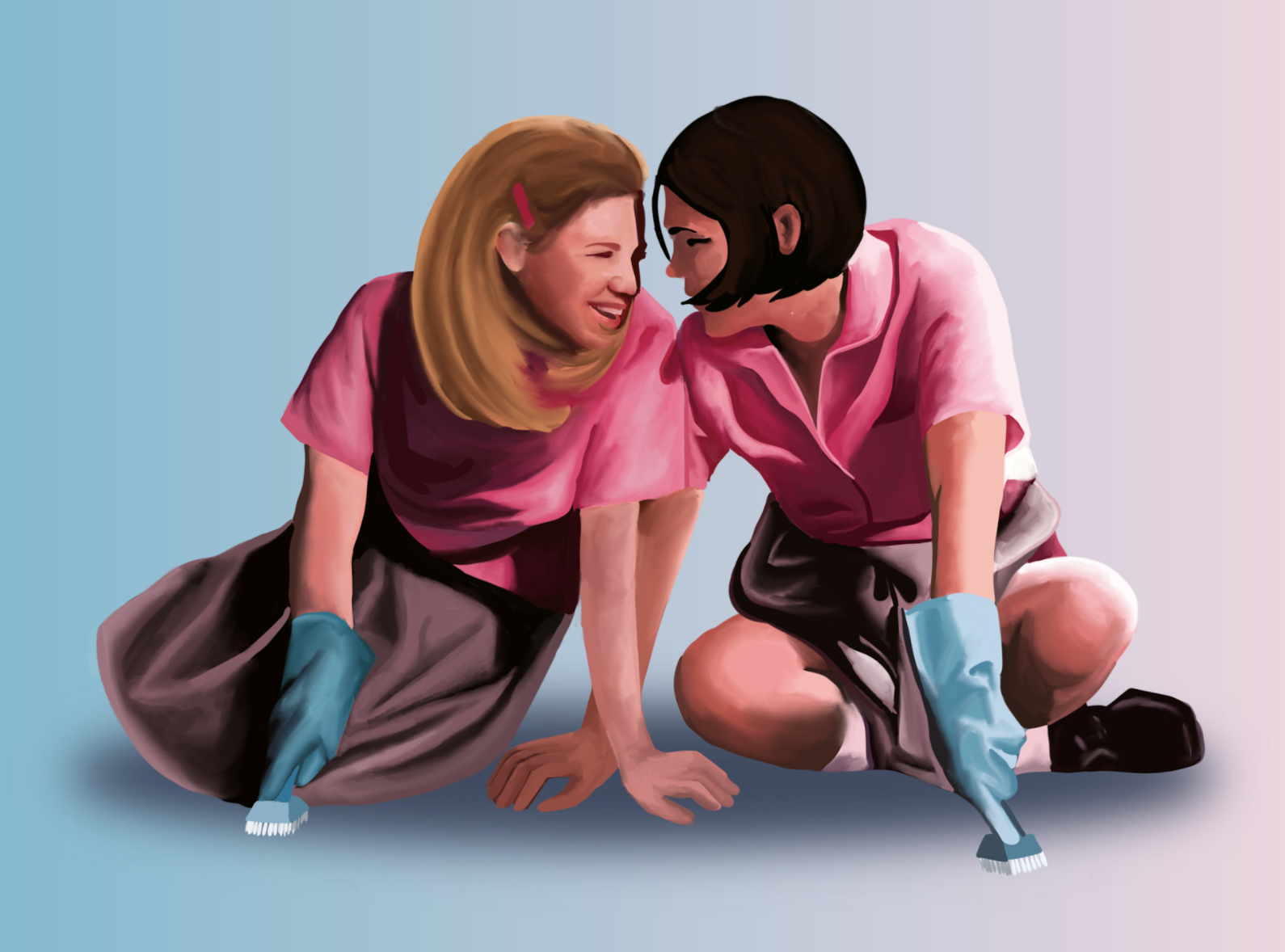When you think of the greatest rom-coms of the late 20th century, what do you think of? 10 Things I Hate About You (1999)? Clueless (1995)? When Harry Met Sally (1989)? What if I told you a hidden gem exists in this sea? Better yet, what if I told you that gem is a tale of two teenage girls who fall in love at, you guessed it, conversion therapy?
But I’m a Cheerleader (BIAC), the 1999 queer romantic comedy directed by Jamie Babbit, is that hidden gem. Surprised? I can’t blame you. The idea of a late-1990s lesbian rom-com likely conjures up images of the exploitation and harmful stereotypes that plagued the little queer representation that existed at the time. However, instead of being condemned to the annals of past problematic films, But I’m a Cheerleader has garnered a cult-like following among the queer community since its release.
But I’m a Cheerleader stood out in the ’90s because it defied heteronormativity when doing so was controversial, but its impact extends beyond its label as a film that was “ahead of its time.” To this day, BIAC shines as a paragon of queer media that does not simply avoid stereotypes but satirizes them, illustrating the superficiality of gendered expectations imposed on anyone, queer or otherwise. BIAC manages to land with audiences both as a great rom-com and as a striking criticism of gender norms that remains relevant today.
BIAC takes place at True Directions rehabilitation camp, where Megan (Natasha Lyonne) and her friends in rehab venture on a five-step program which, if completed, will “unequivocally” make them straight. Piloting this program is Mary (Cathy Moriarty), a strict and devoutly conservative woman who believes she will save the campers from their deviance. So, we follow Megan on her journey in learning how to be straight, experiencing all the joys and thrills of being a heterosexual.
The world of True Directions is jarring and disconcerting, our eyes immediately assaulted by the garish environment Mary has cultivated to fit her idea of straightness. Pastel pinks and blues cover every surface of the rehab house, from the camper’s clothes to the cleaning supplies they use. The program’s curriculum consists of activities that endorse traditional gender expectations. Mary teaches the girls how to clean the house and put on makeup, while Mike, the male counselor (played by an out-of-drag RuPaul), teaches the boys how to fix cars and chop wood.
From the gaudy color scheme to the absurd activities, BIAC evokes queer camp aesthetics with its kitschy cinematography and heightened acting. In addition to its visual appeal, this campy style also mocks the strict gender norms that the True Directions program tries to promote. By exaggerating and occasionally sexualizing the program, the film implies the futility of any attempt to make someone straight: As Mary guides the girls’ cleaning, she sensually pushes and pulls the vacuum cleaner, much to the campers’ enjoyment. As Mike works on the underbelly of the car, the boys ogle while he gyrates his hips. By far the most evident example of this mockery is when the campers disclose the “root” of their homosexuality. Utterly ridiculous answers like “My mom got married in pants” and “I was born in France” play into the artificial nature of these rigid conceptions of gender and sexuality.
As Megan progresses through therapy, a fatal flaw in the True Directions program becomes apparent. Even though canoodling is strictly against the rules, Mary is naive to think that cohabitating a group of gay teens will not result in funny business. While the other campers quickly pair off, Megan attracts the attention of resident troublemaker Graham (Clea DuVall). Whereas Megan hopes the program will make her straight, Graham takes pride in her sexuality, spurning any attempts to change it. See where this is going? Like fire and ice, Graham and Megan butt heads over their different perspectives, yet in the end are drawn together by the sparking chemistry between them.
Centering a genuine romantic relationship around two girls in a ’90s film is already impressive in and of itself, but BIAC pushes the boundaries of the genre even further by adapting traditionally heterosexual rom-com tropes to fit queer experiences. From Megan’s struggle to accept her sexuality to Graham’s fear of familial abandonment, the obstacles Megan and Graham face are intimately relatable to queer viewers. Such accurate and meaningful representation is critical for the film industry. Queer relationships face different challenges from straight ones, and BIAC does well to acknowledge that.
Nowhere is this sentiment clearer than at BIAC’s ending. After discovering Megan’s hookup with Graham, Mary gives both girls an ultimatum: Participate in “simulated sexual lifestyle training” or leave the program. Megan refuses and is expelled from camp, but Graham, fearing disownment by her parents, accepts and stays. Abandoned by her family and now Graham, Megan makes one last attempt to win over her love. She crashes True Direction’s graduation ceremony with an improvised cheer routine and asks Graham to choose her over her family. Graham does, and the two go on to live their best lesbian lives.
This is where the film ends—there’s no cheesy epilogue scene where Megan and Graham find acceptance with their families and eat a big Thanksgiving dinner together. It’s admittedly a bittersweet ending, but it’s also an incredibly authentic one. Family abandonment is an ordeal that many queer people regularly face, and when it does happen, their partners often become their only source of comfort. With Megan and Graham’s ending, BIAC reminds its viewers that everyone’s fairy-tale ending looks different.
But I’m A Cheerleader is not necessarily the perfect rom-com. The acting at times tests the line between camp and genuinely cringey, and certain supporting characters aren’t fleshed out enough to feel like anything more than props. The film’s biggest drawback is it doesn’t do enough to portray the vast diversity of queer people that existed in the ’90s and still exists today. However, considering how the film embraced uniquely queer issues without watering them down for straight audiences, it is clear that BIAC broke the heteronormative rom-com mold in 1999. For that alone, the film deserves its spot as one of the best rom-coms of its generation.





